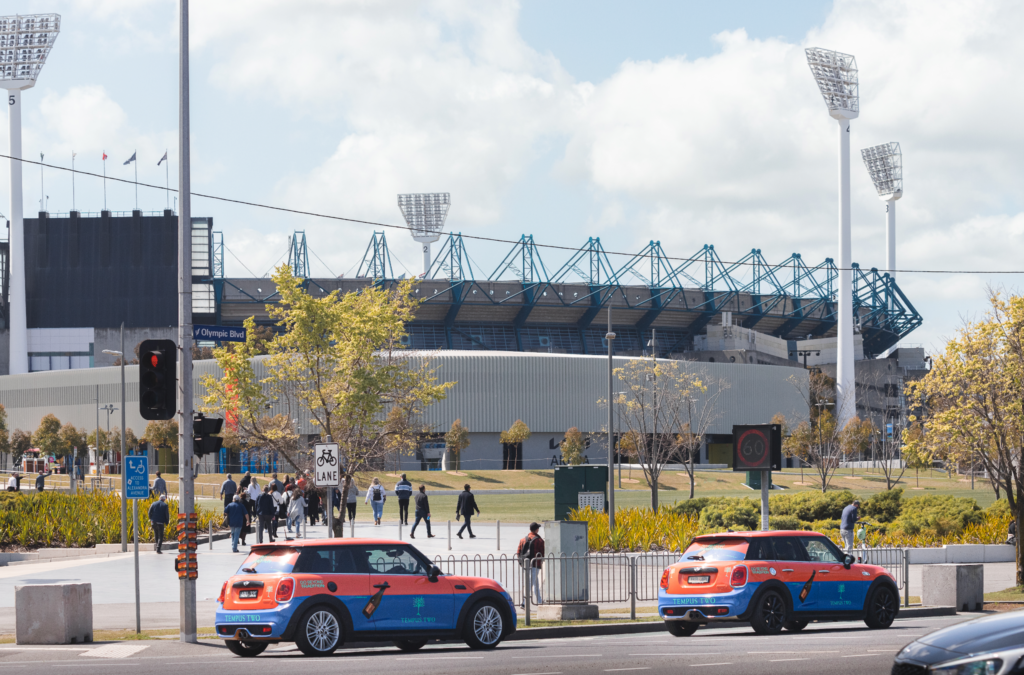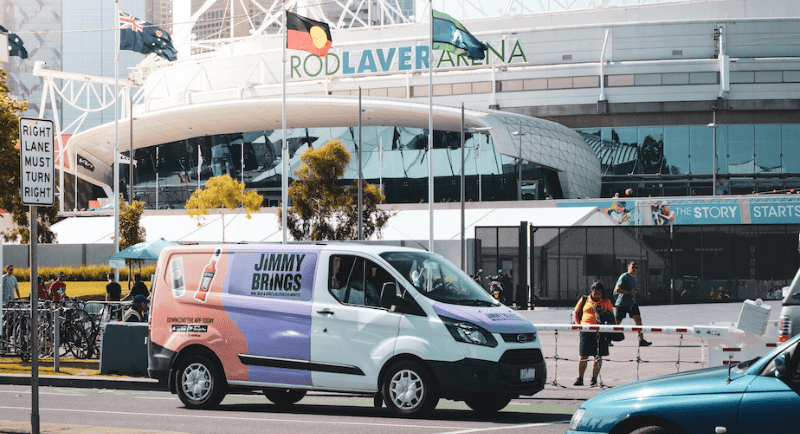2023 will be a big year in Australian sport…and guerrilla marketing. The FIFA Women’s World Cup is set to draw in crowds and all eyes will be on the Ashes in the UK.
Can challenger brands use these platforms to reach a large, captive audience?
It’s estimated that the FIFA World Cup Qatar final brought in 1.5 billion views last year, which my napkin math suggests the sponsors of the event would have had a 15% reach across a target audience of every person in the world – not bad!
This type of reach isn’t a secret of course. Brands are as keen to be sponsors for these events as the fans are for the event themselves, so naturally sponsorship costs will carry a hefty premium. For example, top Olympic sponsors can pay about $100 million over four years to the International Olympic Committee for exclusive marketing rights to the Games.
Whilst most marketers don’t have a casual $100 million lying around in their budgets or need to reach 15% of the world’s population, abundant opportunities still exist for creative and disruptive marketers who can think outside the box.
Tapping into the hype
I don’t love the term, but “ambush” marketing is what it’s called when brands leverage the popularity of a sports event without officially sponsoring it. Brands can create guerrilla marketing campaigns that are inspired by the event but don’t use any of its branding, logos, or imagery. These modern-day marketing bushrangers will “ambush” the event into providing them with outsized advertising returns.
For example, last year IKEA acknowledged that the World Cup could completely divide the living room without using any of the event’s imagery or branding. It simply placed a headline, “when your friends cheer for the wrong team”, next to an image of the modular Vallentuna sofa which had been separated to create seating for the opposition.
Or, when Italy failed to qualify for the World Cup for the first time in 60 years, UberEATS made a series of videos that featured a variety of football stars trying to cheer coach Andrea Pirlo up. His spirits start to lift and he considers changing his mind about watching the competition after a McDelivery arrives from UberEATS.
Getting amongst it
Brands can use public spaces surrounding the event to reach their audience as well, and then extend this via PR and socials. By positioning themselves in high-traffic areas outside stadiums, they can maximise their visibility or create a shared experience of the brand between fans. For example, Jimmy Brings and Tempus Two ran Wrappr activations around Melbourne Park at the recent Australian Open, and around the MCG for the AFL Grand Final using their fleet of wrapped Wrappr vehicles. Both were able to drive significant increases in exposure.

Above: Wrappr sent Tempus Two vehicles to the MCG on a big 2022 game day
Top: Jimmy Briangs outside the Rod Laver Arena
Crossing the line?
With great marketing does come some risk, so brands should be aware of the legal and licensing frameworks in place at the events they’re planning to target.
Nike famously has ambushed their competitors at multiple Olympics, which has resulted in the laws around the games getting significantly stricter. Beats by Dre followed up the 2008 Olympic stunt of getting LeBron James to hand out headphones to teammates, by sending free Union Jack branded headphones to British athletes throughout the entire London 2012 Games. The result? A 44% increase in sales.
So maybe flirting with the rules is something you want to be part of your strategy? If so, you have to be prepared for things to not go as planned.
Guerrilla marketing: Playing with fire? You might get burned
Vodafone organised for two streakers to have its logo on their back when running across the pitch during a 2002 Bledisloe Cup game. However, the stunt backfired and attracted unwanted attention with the subsequently missed kick, which the pitch invasion interrupted, deciding the game! Not the impact Vodafone marketers were after, I’m sure, but when you play with fire you must expect to sometimes get burned. But, what would the impact have been if the goal was scored? This is the risk/reward that Vodafone took.

Wrappr co-CEO Liam Shaw
A lasting impression
Guerilla marketing at major sports events provides brands with an opportunity to reach a large captive audience and generate buzz. But it goes beyond that. Sports by their very nature bring high emotions, as anyone who might have followed Messi’s World Cup fairy-tale last year would attest. Rivalry, pride, joy, shock, anger, and despair are all within the spectrum of heightened emotions that a fan could feel.
These highly emotive states offer advertisers a chance to become associated with memory linkage of the event itself. Creatives are always trying to establish emotion with their campaigns, and here the desired response within the audience has already been created. This can help build up long-term memory encoding, that’s reactivated and refreshed when watching sport in the future. Emotional campaigns are 2x as likely than rational counterparts to achieve top-performing results. This is why KFC and Toyota have invested for such a long time with cricket and KIA likewise with tennis. The sport can become a trigger for remaining top of mind with your audience.
So, it’s no surprise that brands spend huge amounts of money to be a part of the initial PR hype, as well as the stories and memories that emerge from the spectacle. However, brands that don’t have a sponsorship deal in the budget can still make a lasting impression on the masses. It just takes an element of surprise, tactical targeting, and an appetite to be a bit cheeky.

